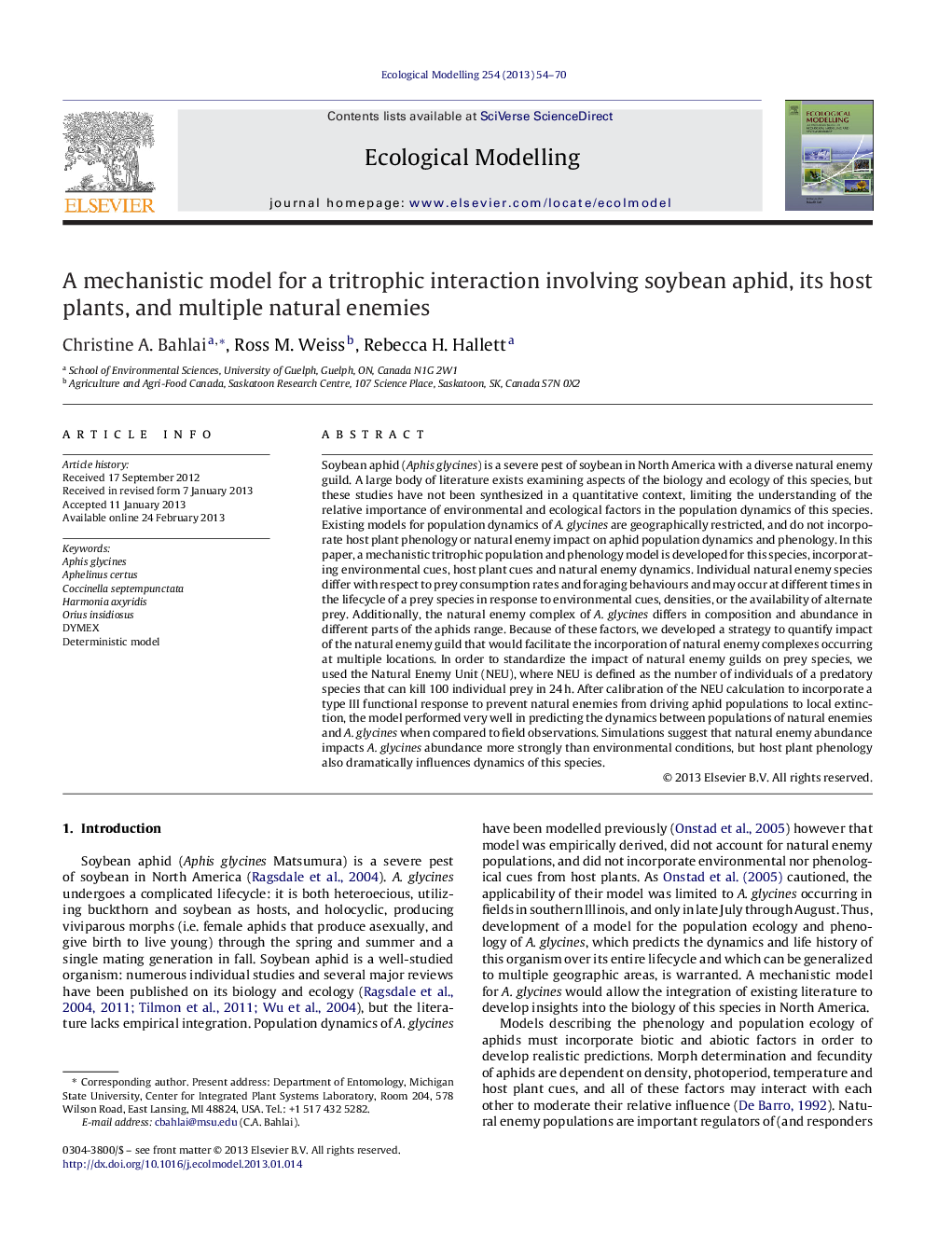| کد مقاله | کد نشریه | سال انتشار | مقاله انگلیسی | نسخه تمام متن |
|---|---|---|---|---|
| 4376178 | 1617491 | 2013 | 17 صفحه PDF | دانلود رایگان |

Soybean aphid (Aphis glycines) is a severe pest of soybean in North America with a diverse natural enemy guild. A large body of literature exists examining aspects of the biology and ecology of this species, but these studies have not been synthesized in a quantitative context, limiting the understanding of the relative importance of environmental and ecological factors in the population dynamics of this species. Existing models for population dynamics of A. glycines are geographically restricted, and do not incorporate host plant phenology or natural enemy impact on aphid population dynamics and phenology. In this paper, a mechanistic tritrophic population and phenology model is developed for this species, incorporating environmental cues, host plant cues and natural enemy dynamics. Individual natural enemy species differ with respect to prey consumption rates and foraging behaviours and may occur at different times in the lifecycle of a prey species in response to environmental cues, densities, or the availability of alternate prey. Additionally, the natural enemy complex of A. glycines differs in composition and abundance in different parts of the aphids range. Because of these factors, we developed a strategy to quantify impact of the natural enemy guild that would facilitate the incorporation of natural enemy complexes occurring at multiple locations. In order to standardize the impact of natural enemy guilds on prey species, we used the Natural Enemy Unit (NEU), where NEU is defined as the number of individuals of a predatory species that can kill 100 individual prey in 24 h. After calibration of the NEU calculation to incorporate a type III functional response to prevent natural enemies from driving aphid populations to local extinction, the model performed very well in predicting the dynamics between populations of natural enemies and A. glycines when compared to field observations. Simulations suggest that natural enemy abundance impacts A. glycines abundance more strongly than environmental conditions, but host plant phenology also dramatically influences dynamics of this species.
► We model population dynamics of soybean aphid and its natural enemies using a mechanistic population model including a natural enemy unit module.
► The model provides a quantitative synthesis of the available literature on soybean aphid biology and ecology.
► The natural enemy unit standardizes the impact a species has on prey by relative voracity.
► Aphid populations are more strongly impacted by natural enemies than by host plant phenology and environmental conditions.
► The effect of predation is stronger than host plant phenology on numbers of overwintering aphids.
Journal: Ecological Modelling - Volume 254, 10 April 2013, Pages 54–70